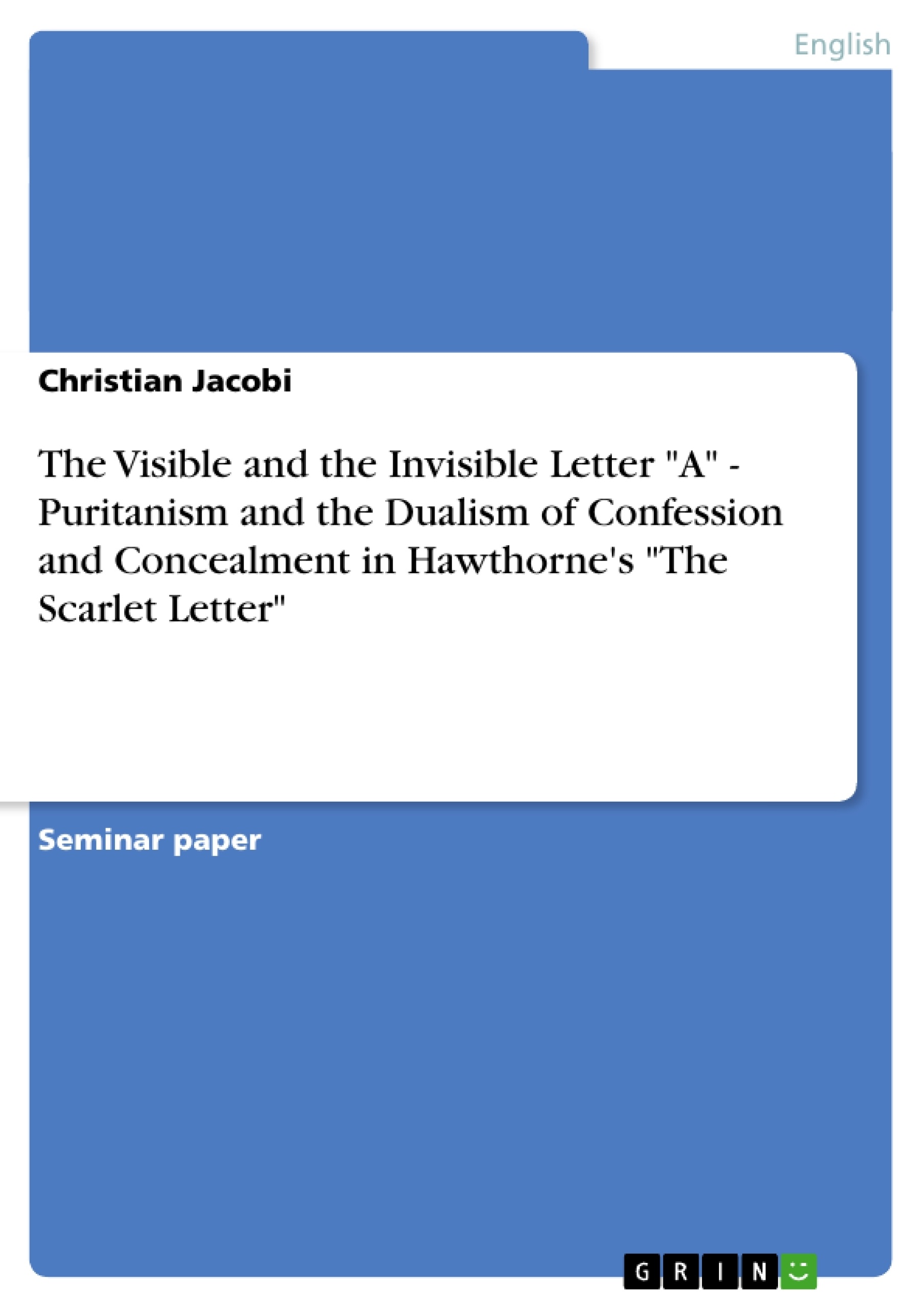Since its publication in 1850, Hawthorne’s masterpiece romance The Scarlet Letter has
been hailed by average readers and literary critics alike as one of the finest pieces of
literature ever to have come out of the pen of an American writer.
Not only regarded as “Hawthorne’s most widely read and admired novel”3, The Scarlet
Letter has also given numerous generations of critics bountiful opportunity for in-depth
analysis of the novel’s plot, characters, and meaning. A fair amount of scholarly
attention has, for instance, been devoted to Hawthorne’s “imposing splendor of
portraiture”4. In the case of The Scarlet Letter, this has been evidenced by critics´
particular interest in Hawthorne’s portrayal of two of the novel’s central characters: the
Boston townswoman Hester Prynne and the pastor Arthur Dimmesdale.
Against the backdrop of mid-17th century Puritan society in the newly founded
American colonies, Hawthorne describes how these two characters´ lives are, each in its
very own way, dramatically changed by one moment of adulterous passion.
It is the aim of the present paper to deliver a careful analysis of Hester and Arthur at
the center of which shall be the difficult social and psychological circumstances the two
characters encounter in the wake of their adultery. It will equally be shown that Hester
and Arthur embrace different strategies in dealing with their situation. A plo t analysis
reveals a clear dilemma and duality of a confession versus concealment theme which
impacts greatly on the two characters and their behavior. Having been forced to confess
to adultery charges, Hester manages to reshape her life by confronting pre sent
demands while also hoping for future opportunities. By contrast, Arthur is tormented
and obsessed by his moment of moral weakness in the past, wavering between reve -
lation and dissimulation of his deed as he doubletalks his way through the novel’s plo t.
The first chapter of this study intends to establish a framework for the ensuing
character analysis. Its aim will be to portray Puritan society as shown in Hawthorne’s
work, so that Hester’s and Arthur’s situation in the novel’s plot will become clear.
An interpretation of the two characters will follow in chapter two. First, Hester’s
behavior and the role she plays in the novel shall be analyzed under the aforementioned
confession theme. [...]
3 Waggoner, p. 118.
4 Ripley, p. 26.
Inhaltsverzeichnis (Table of Contents)
- Introduction
- Setting the Stage: Puritan Society and its Mores as Portrayed in Hawthorne's The Scarlet Letter
- The Visible and the Invisible Letter ´A´ - Puritanism and the Dualism of Confession and Concealment in The Scarlet Letter
- Hester Prynne and her Life in Confession, Ignominy, and, Yet, Secret Rebellion
- Arthur Dimmesdale, his Dilemma, and his Motives for the Concealment of his Adultery
- Arthur and Hester in the Forest and on the Scaffold: The Scarlet Letter's Revelatory Culmination
- Conclusion
Zielsetzung und Themenschwerpunkte (Objectives and Key Themes)
This paper aims to examine the social and psychological complexities faced by Hester Prynne and Arthur Dimmesdale in Hawthorne's The Scarlet Letter, specifically focusing on the contrasting strategies they employ in dealing with their adulterous relationship. The paper will analyze the themes of confession and concealment within the context of Puritan society in 17th century America.
- The impact of Puritan society on individual lives and the strict moral code enforced.
- The dualism of confession and concealment as it relates to Hester and Arthur's respective choices.
- Hester's defiance and resilience in the face of societal condemnation and her pursuit of personal freedom.
- Arthur's internal struggle between guilt and self-preservation and his inability to fully confess his sin.
- The role of the forest and the final scaffold scene as pivotal moments in revealing the characters' inner truths.
Zusammenfassung der Kapitel (Chapter Summaries)
The first chapter of this study will introduce the Puritan society depicted in Hawthorne's novel, providing a historical and social context for the events that unfold. It will examine the strict rules and social pressures that governed Puritan life and how individuals might have come into conflict with them.
The second chapter will focus on the analysis of Hester Prynne and Arthur Dimmesdale. The first part will examine Hester's behavior and the role she plays in the novel, exploring her choice to confess to her adultery and the subsequent consequences. The second part will similarly analyze Arthur's character, focusing on his choice to conceal his sin and the psychological turmoil that results.
Schlüsselwörter (Keywords)
This paper explores the themes of Puritanism, confession, concealment, adultery, societal condemnation, individual freedom, psychological turmoil, and the duality of moral choices within the context of Hawthorne's The Scarlet Letter. The analysis focuses on the characters of Hester Prynne and Arthur Dimmesdale, their respective choices, and the impact of their actions on their individual lives.
- Arbeit zitieren
- Christian Jacobi (Autor:in), 2001, The Visible and the Invisible Letter "A" - Puritanism and the Dualism of Confession and Concealment in Hawthorne's "The Scarlet Letter", München, GRIN Verlag, https://www.hausarbeiten.de/document/35094


